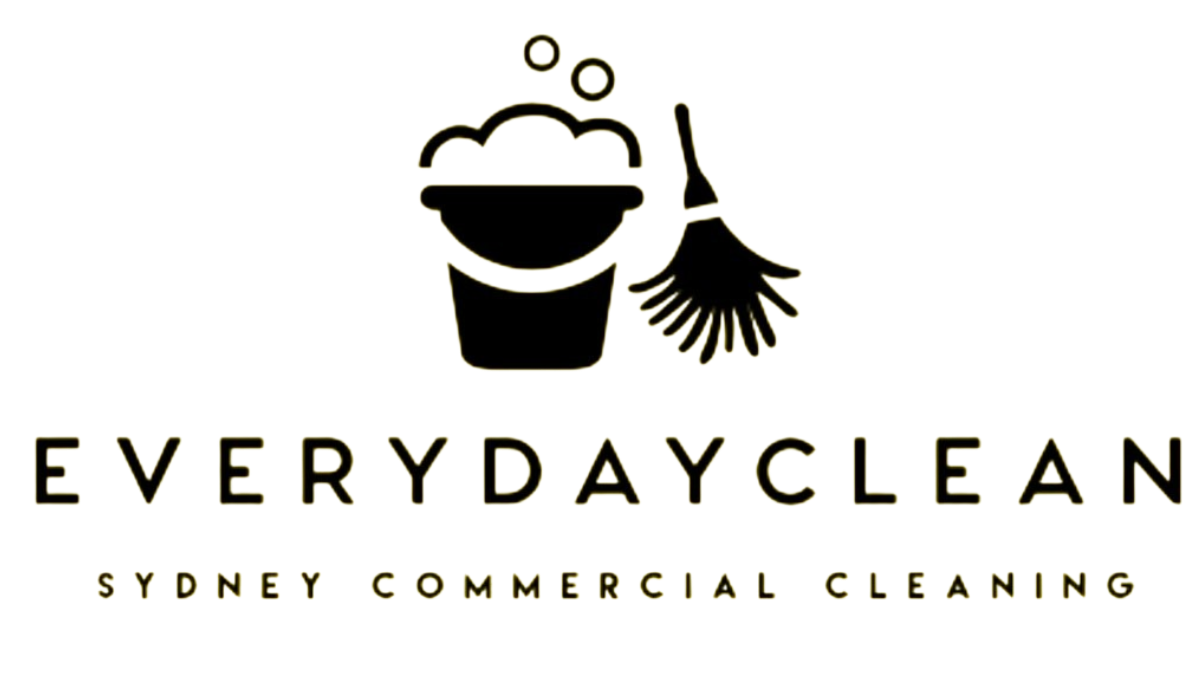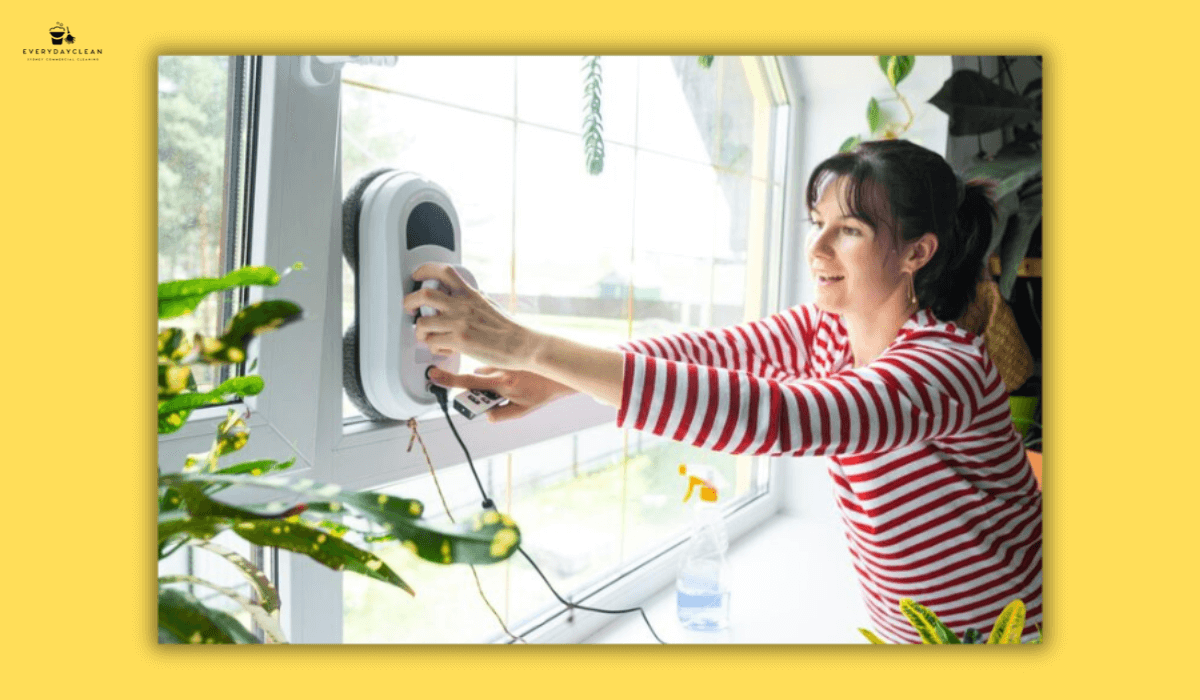How to Clean Windows Streak-Free? 5 Steps, Tools & Tips
How to clean windows streak-free starts by mixing equal parts white vinegar and distilled water in a spray bottle, or use a few drops of mild dish soap in warm water. Remove surface dust or cobwebs, then apply the solution using a spray or a damp microfiber cloth. Wipe the glass with straight strokes, and dry immediately with a clean microfiber cloth or squeegee—wiping the blade after each pass to eliminate streaks.
This guide outlines the exact steps used by professional cleaners across Sydney and beyond to achieve flawless, streak-free windows—using simple tools, smart timing, and well-tested cleaning logic.
What Causes Window Streaks After Cleaning?
Streaks appear when cleaning fluid dries before it can be removed evenly. This is most likely to occur due to:
- Overuse or underuse of cleaning products
- Wiping in circular motions or using the wrong material
- Cleaning in direct sunlight, where heat accelerates evaporation
- Using
tap water that leaves mineral deposits
- Ignoring the
edges and corners where runoff collects
These streaks are not always a sign of dirt—but rather residues left behind during uneven drying or incomplete removal.
Step-by-Step: How to Clean Windows Without Streaks
Below is the full process used by facility maintenance teams and commercial cleaners to achieve streak-free windows on both indoor and outdoor surfaces.
Step 1: Rinse Off Dust and Loose Debris
Begin by spraying the glass with plain water or wiping it with a damp cloth to remove loose dust, pollen, or cobwebs. This ensures grit doesn’t scratch the glass during deeper cleaning and reduces the chance of smearing.
Step 2: Apply Cleaning Solution Evenly
Spray a balanced amount of window cleaner across the surface. Avoid soaking the glass, especially on interior windows. A proven homemade solution includes:
- 1 part white vinegar
- 1 part distilled water
- Optional: a dash of rubbing alcohol for faster drying
Always use distilled or filtered water to reduce streaking from mineral deposits.
Step 3: Wipe With a Microfibre Cloth or Squeegee
Wipe in straight lines—either top to bottom or side to side—but never in circles. Microfibre cloths work well for small areas, while a squeegee is better for large panes. Wipe the squeegee blade after each stroke to avoid water trails.
Step 4: Dry Corners and Edges Immediately
Once the glass is clean, dry the window’s edges, tracks, and sills with a separate dry cloth. This removes any remaining moisture and stops it from seeping back onto the glass as streaks.
Step 5: Repeat on the Other Side
Streak-free cleaning requires treating both sides of the glass. If one side is neglected, internal condensation or dust can still make the window appear hazy, especially in bright light.
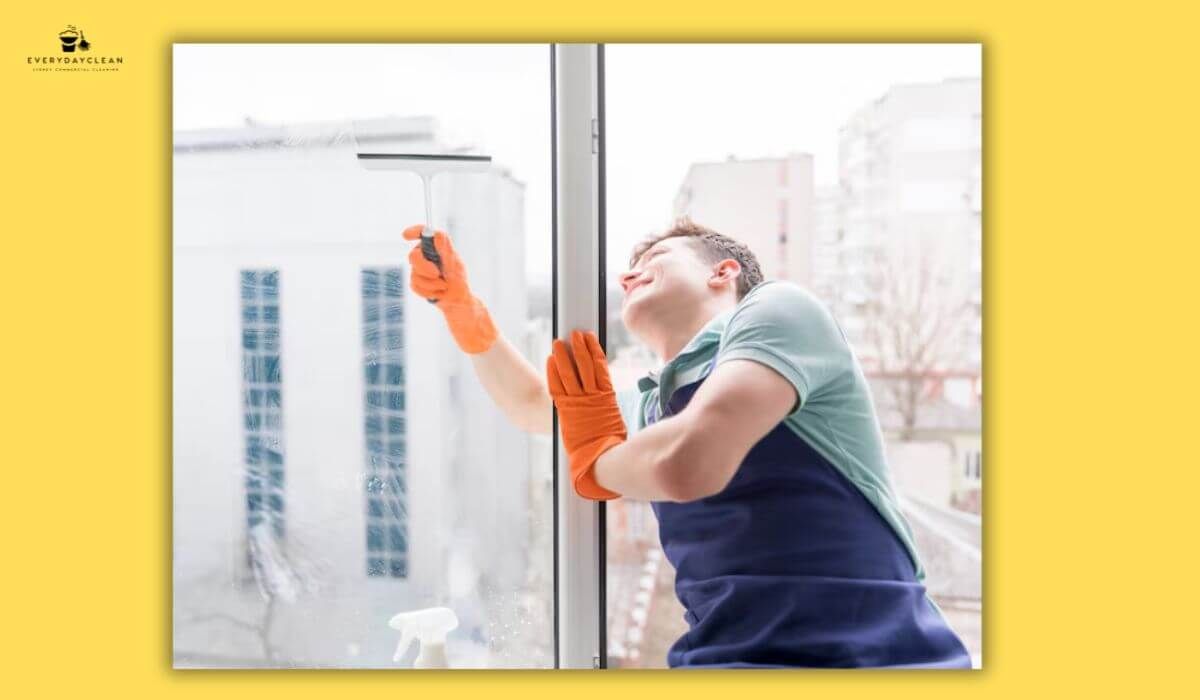
Best Tools for Streak-Free Window Cleaning
Achieving a flawless finish depends as much on equipment choice as on cleaning skill. Not all cloths, blades, or sprayers deliver the same results.
Before listing tool options, here’s a brief overview of how tools impact the outcome:
The wrong tool can spread grime, leave lint, or dry unevenly—while the right one removes contaminants and polishes cleanly in one pass. This same principle applies across services like
professional carpet cleaning steps, where equipment selection directly impacts results.
| Tool | Ideal Use Case | Notes |
|---|---|---|
| Microfibre cloth (lint-free) | Interior windows and touch-up wiping | Wash between uses to avoid streak build-up |
| Squeegee with a rubber blade | Exterior windows, large panes, glass doors | Requires a clean blade after every pass |
| Distilled water spray bottle | Applying the homemade cleaner evenly | Avoids hard water staining |
| Extension pole + squeegee | Hard-to-reach glass on upper floors | Use with safety precautions |
| Scrubber pad or sponge wand | Pre-cleaning heavy dirt or bird droppings | Rinse thoroughly after each use |
When to Clean Windows for Streak-Free Results
Time of day and environmental conditions play a major role in achieving a streak-free result. Cleaning in full sunlight may cause evaporation before the product is removed, which increases the risk of residue and haze.
Ideal conditions include:
- Cloudy weather or early morning/late afternoon
- Low wind to prevent debris settling mid-clean
- Indoor areas with good airflow but indirect light
Professionals often start with shaded windows or cooler parts of the property first to avoid fast drying that leads to visible streaks.
For shared buildings, Everyday Clean’s Strata Cleaning services ensure common-area windows and glass are maintained on a professional schedule.
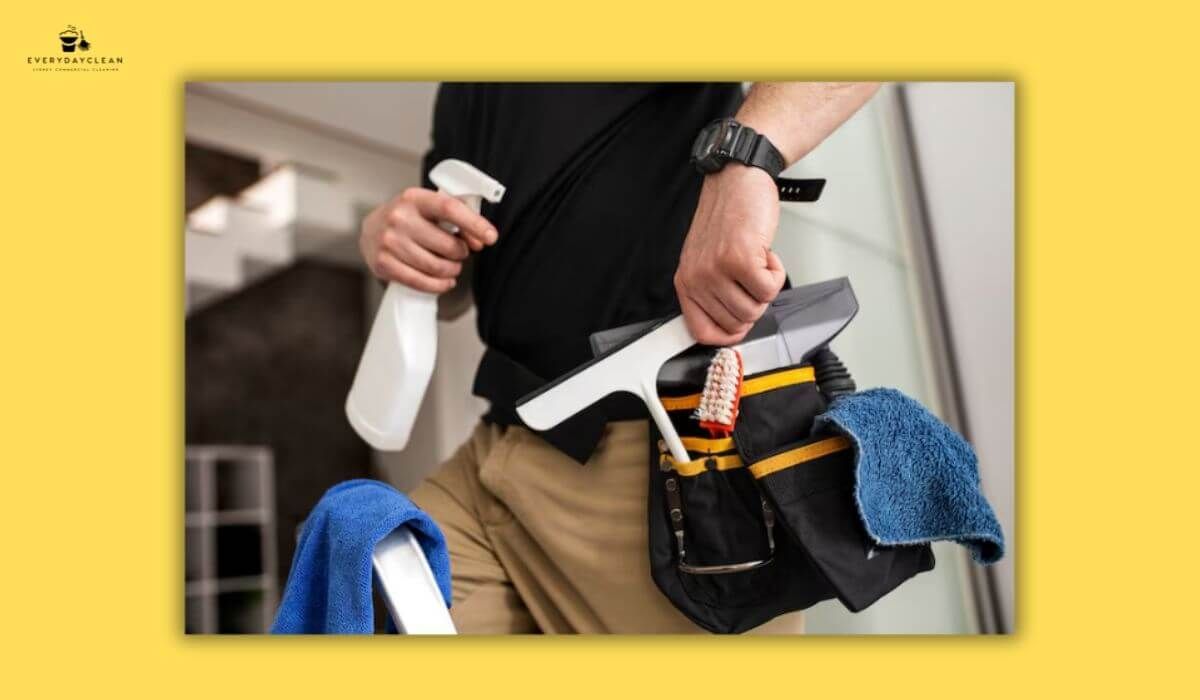
Common Mistakes to Avoid When Cleaning Windows
Even when using the right products, streaks can appear due to avoidable missteps. Below is a summary of mistakes that commonly lead to disappointing results.
Transitioning into the list:
Avoiding these habits can drastically improve the clarity and consistency of window cleaning across all surface types.
- Using paper towels that do not shed lint or fibres
- Not rinsing or replacing dirty clothes mid-clean
- Applying excessive cleaning solution that pools on the surface
- Using tap water that contains minerals
- Wiping in circular motions that trap moisture patterns
- Leaving corners or sills damp (where water may drip back onto the glass)
Professional cleaners consistently follow linear wiping, tool hygiene, and fast drying protocols to prevent all of the above.
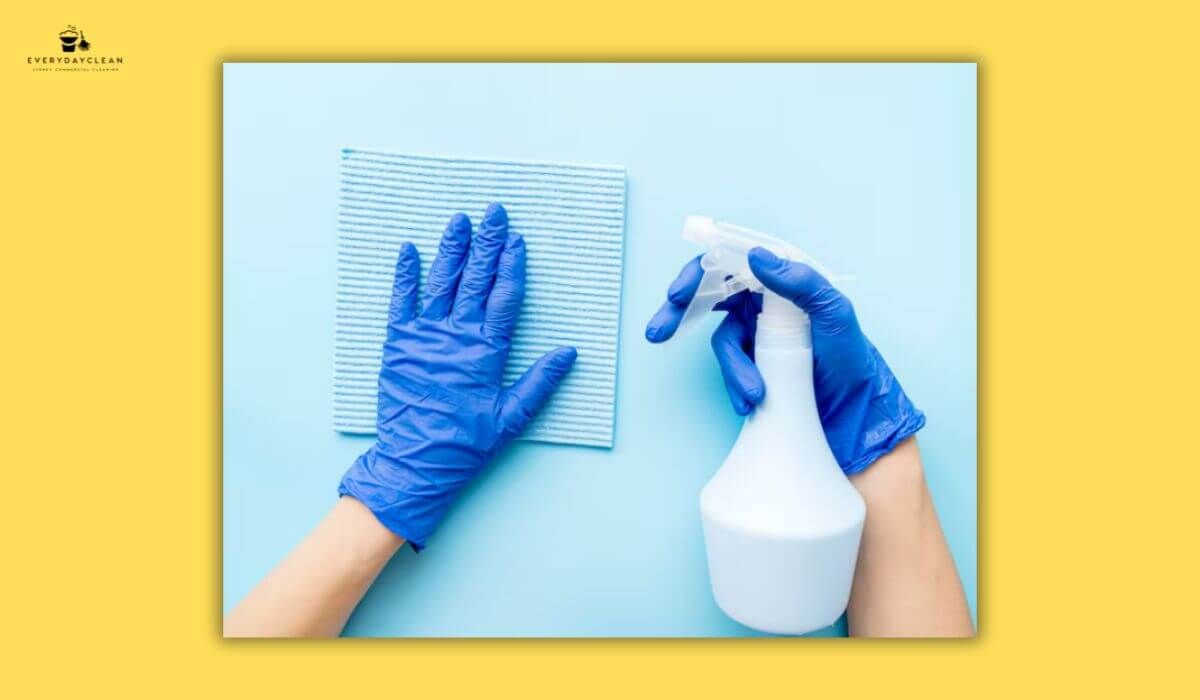
FAQs About How to Clean Windows Streak-Free
To further support users searching for practical, cleaning-focused advice, the following FAQs address high-intent queries based on query fan-out and real user behaviour.
What is the best homemade cleaner for streak-free windows?
The most reliable homemade cleaner combines equal parts white vinegar and distilled water. Some professionals add a teaspoon of rubbing alcohol to improve evaporation speed, particularly in humid areas. Always apply using a fine-mist spray bottle and a clean microfibre cloth. The use of distilled water is key—tap water often contains minerals that dry unevenly and leave visible marks even after thorough wiping.
Why do my windows still streak after cleaning?
Even when using a proper cleaner, streaks can form due to overuse of the product, fast drying in direct sunlight, or reusing cloths already saturated with dirt. Another common mistake is neglecting the corners or frames, where residual moisture can seep back onto the glass after cleaning. To fix this, reduce cleaner quantity, work in shade or cooler times of day, and switch to lint-free cloths or professional squeegees with clean blades between strokes.
Can you use a newspaper for streak-free window cleaning?
While traditionally popular, the newspaper is no longer the go-to tool for professional cleaners. Older-style newsprint absorbed moisture effectively without scratching glass, but modern ink formulas may smudge or leave behind subtle residue. Microfibre cloths have since replaced newspaper in most settings—they’re reusable, lint-free, and more consistent across different surface types. However, some users still find newspapers effective for outdoor windows if used with vinegar-based cleaners and tested first.
How often should windows be cleaned to stay streak-free?
In most residential environments, interior windows should be cleaned every 4 to 8 weeks, while exterior windows may require cleaning every 3 to 6 months, depending on pollution, weather exposure, and landscape. In high-traffic commercial spaces such as gyms, retail outlets, or glass offices, a weekly or fortnightly cleaning schedule is preferred to maintain clear presentation and hygiene compliance.
What’s the fastest way to dry windows without streaks?
Use a high-absorbency, lint-free microfibre cloth for drying smaller panes and a rubber-bladed squeegee for larger windows. Always wipe the squeegee blade after each pass. Avoid tissues or old rags, which tend to spread moisture unevenly. If needed, buff the glass with a second dry cloth immediately after the initial wipe to polish off any moisture lines. Good ventilation also helps prevent streaks caused by slow drying or internal condensation.
Book Streak-Free Window Cleaning in Sydney with Everyday Clean
Everyday Clean offers expert window cleaning services across Sydney for homes, offices, and retail buildings. Our professionals use commercial-grade equipment and residue-free techniques to deliver crystal-clear, streak-free results—on every surface, every time.
Request a quote or book a window cleaning service today and experience the Everyday Clean difference.
Author: Everyday Clean Content Team
Everyday Clean is Sydney’s trusted provider of commercial cleaning solutions, including pools, gyms, offices, and strata properties. Our licensed professionals use advanced, eco-friendly equipment to deliver safe, compliant, and spotless results. With deep experience across Sydney’s hospitality, fitness, and residential sectors, we help facilities maintain inviting, healthy environments that guests trust.
